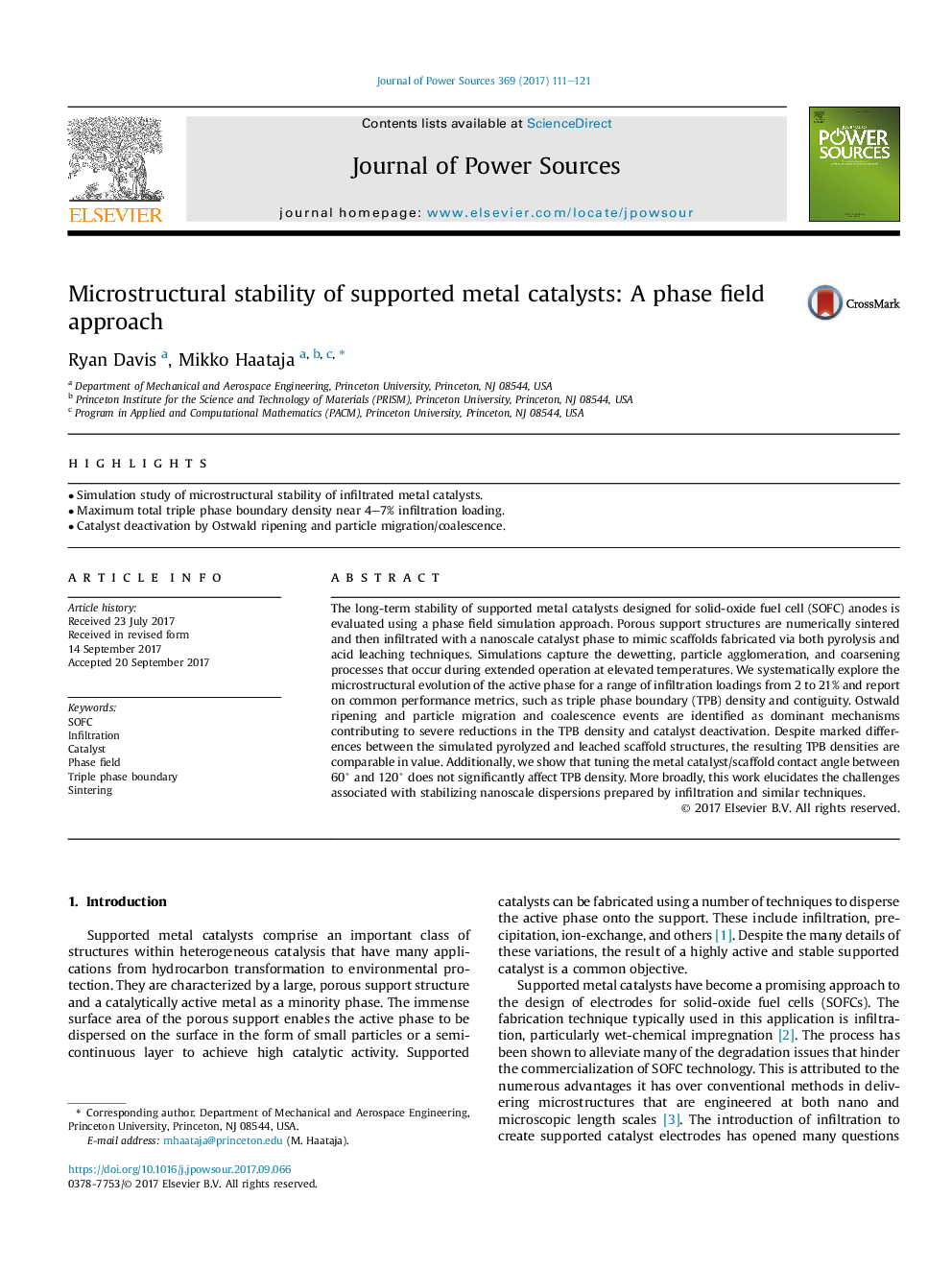| کد مقاله | کد نشریه | سال انتشار | مقاله انگلیسی | نسخه تمام متن |
|---|---|---|---|---|
| 5148667 | 1497863 | 2017 | 11 صفحه PDF | دانلود رایگان |
عنوان انگلیسی مقاله ISI
Microstructural stability of supported metal catalysts: A phase field approach
دانلود مقاله + سفارش ترجمه
دانلود مقاله ISI انگلیسی
رایگان برای ایرانیان
کلمات کلیدی
موضوعات مرتبط
مهندسی و علوم پایه
شیمی
الکتروشیمی
پیش نمایش صفحه اول مقاله

چکیده انگلیسی
The long-term stability of supported metal catalysts designed for solid-oxide fuel cell (SOFC) anodes is evaluated using a phase field simulation approach. Porous support structures are numerically sintered and then infiltrated with a nanoscale catalyst phase to mimic scaffolds fabricated via both pyrolysis and acid leaching techniques. Simulations capture the dewetting, particle agglomeration, and coarsening processes that occur during extended operation at elevated temperatures. We systematically explore the microstructural evolution of the active phase for a range of infiltration loadings from 2 to 21% and report on common performance metrics, such as triple phase boundary (TPB) density and contiguity. Ostwald ripening and particle migration and coalescence events are identified as dominant mechanisms contributing to severe reductions in the TPB density and catalyst deactivation. Despite marked differences between the simulated pyrolyzed and leached scaffold structures, the resulting TPB densities are comparable in value. Additionally, we show that tuning the metal catalyst/scaffold contact angle between 60â and 120â does not significantly affect TPB density. More broadly, this work elucidates the challenges associated with stabilizing nanoscale dispersions prepared by infiltration and similar techniques.
ناشر
Database: Elsevier - ScienceDirect (ساینس دایرکت)
Journal: Journal of Power Sources - Volume 369, 30 November 2017, Pages 111-121
Journal: Journal of Power Sources - Volume 369, 30 November 2017, Pages 111-121
نویسندگان
Ryan Davis, Mikko Haataja,